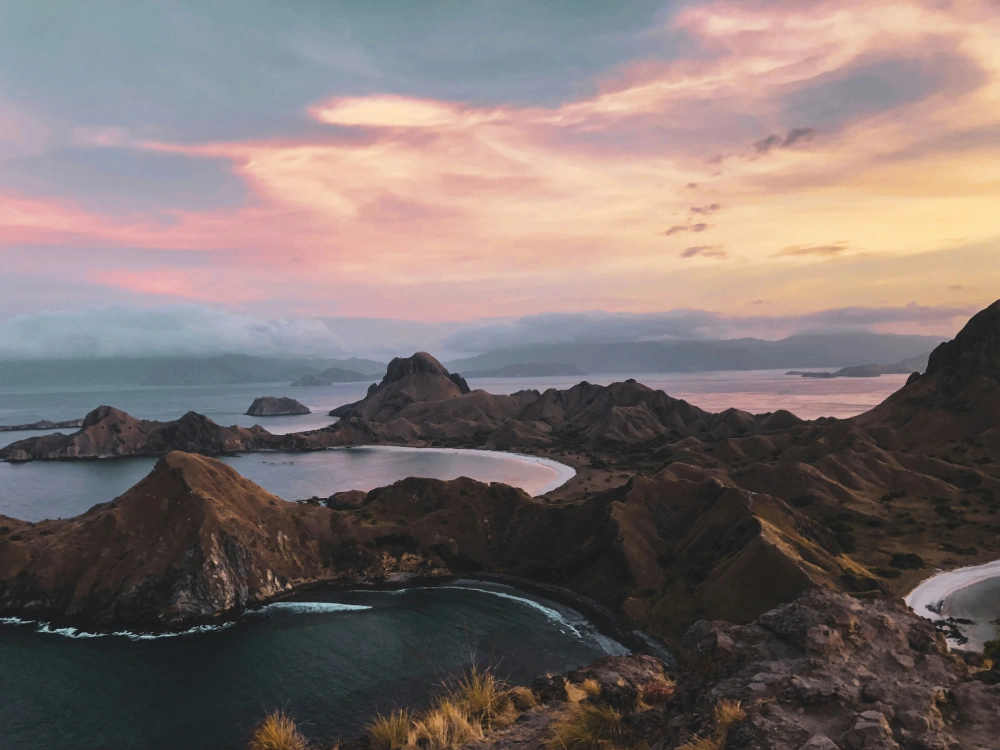
When Portuguese traders arrived on the eastern shores of this rich island they were welcomed by the fiery canopies of the striking Delonix regia, a gorgeous flowering tree known locally as ‘Flamboyan’. Such a sight were its flowers that inspired the settlers to give the land a new name: Cabo de Florensis, the ‘Cape of Flowers’.
Found east of Lombok and Sumbawa, in the East Nusa Tenggara region of Indonesia, Flores certainly lives up to its title. This is a land of colour and exotic nature, showcasing spectacles unfolding both above and below the sea. It is perhaps most famous for being home to the ancient Komodo Dragon, the world’s largest lizard, but Flores invites for an iconic getaway of island hopping and discovering a world so vastly different from Bali.
Labuan Bajo
Though only a small part of this vast island, Flores’ western coast certainly takes most of the attention. A cluster of islands splinter out into the sea, creating the ultimate wonderland for a seafaring expedition. Visitors keen to explore the region must first touch down in the port town of Labuan Bajo. Once a small fishing village, Labuan Bajo has now blossomed into a vibrant tourist centre with cosy accommodations and eateries, serving as the main jumping-off point to explore the highlights of Komodo National Park and beyond.
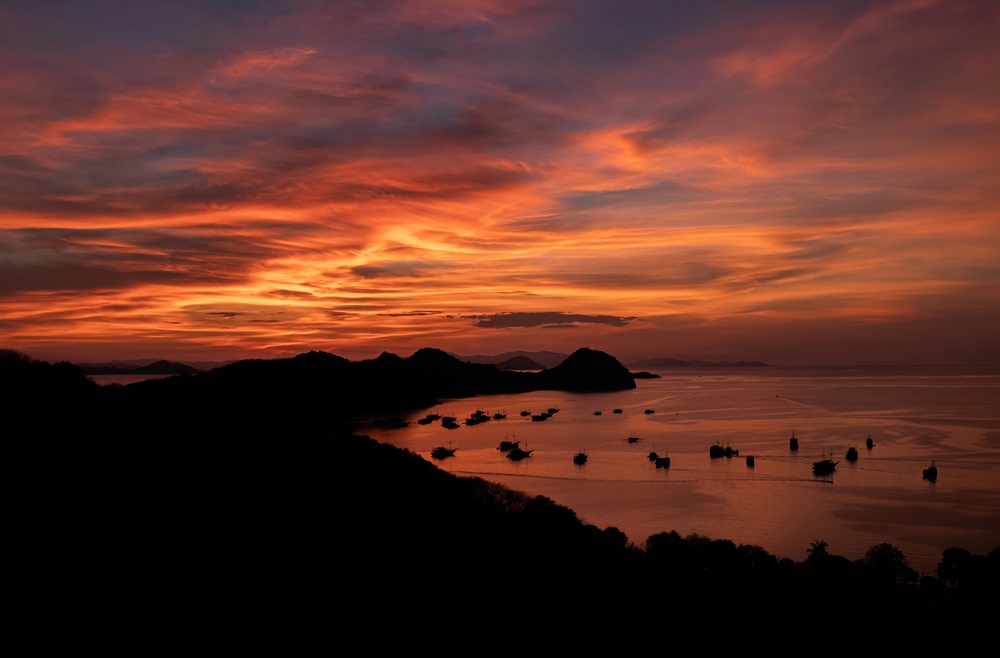
The town offers a preview of the wonders that await: crystal clear blue water, powdery white sand beaches and silhouettes of low-lying mountains visible from the bay. The journey we will take you on here is by sea, on a tropical escape to Pulau Padar, the sands of Pink Beach and the home of the dragons, Komodo Island.
Pink Beach and Padar Island
Approximately 40 kilometres from Labuan Bajo lies the enchanting Pink Beach, renowned for its surreal pink hue that casts a captivating glow, making it a favourite spot for Instagram-worthy photos. The sand’s rosy tint shimmers lightly under the sun, a result of the erosion of red coral and ‘foraminifera’. Visitors can revel in the idyllic scenery or plunge into the crystalline waters, perfect for snorkelling amidst the vibrant marine life. At the foot of the surrounding mountains are quaint beachfront restaurants where one can enjoy refreshments, local bites, or purchase unique souvenirs.
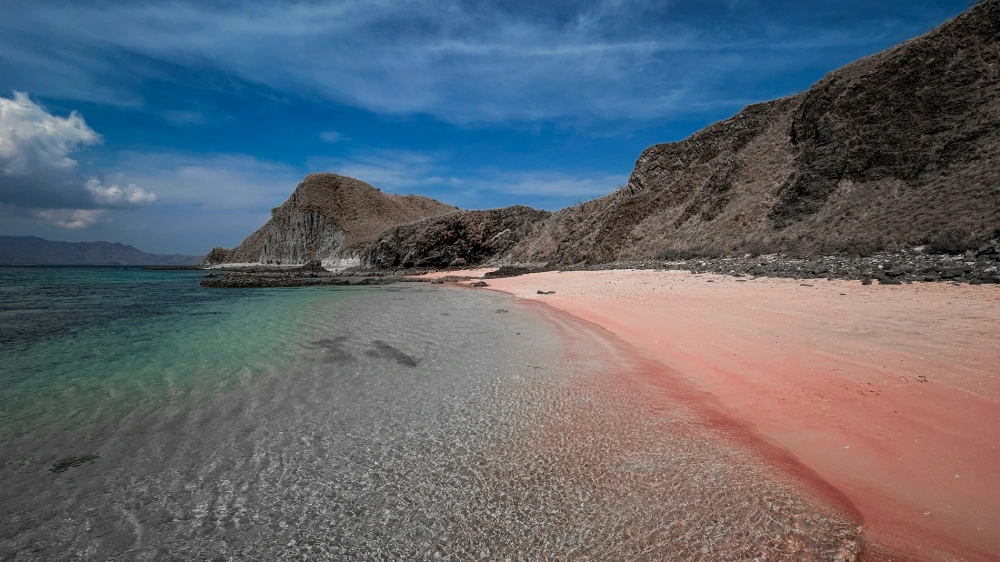
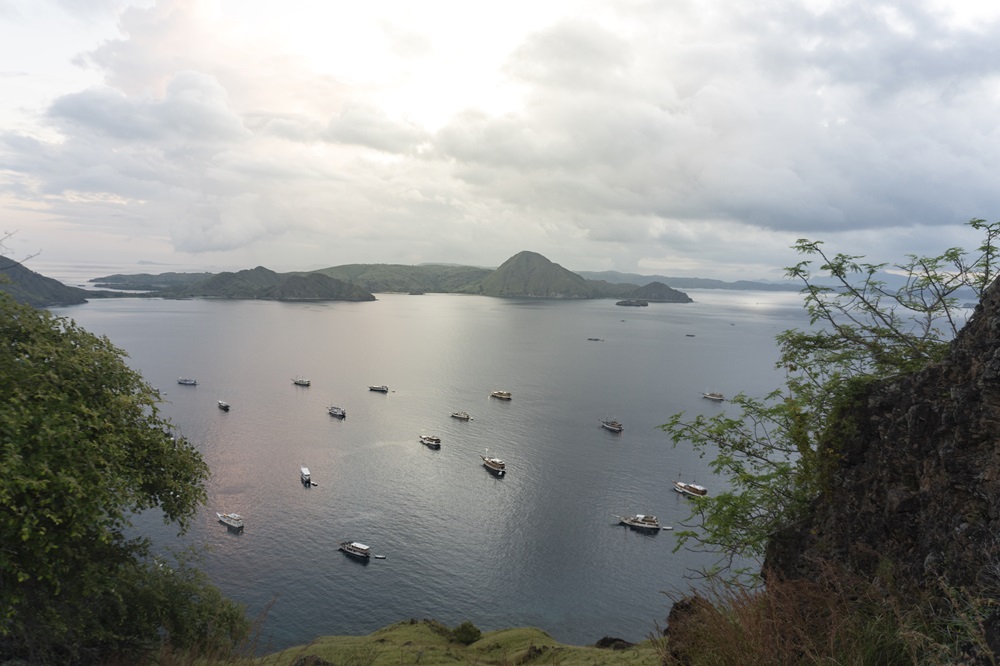
A two-hour boat journey transports visitors to Padar, with most embarking on their adventure before daybreak to witness the ethereal sunrise spectacle. Although an early start may seem daunting, it’s worth the sacrifice of sleep. Firstly, en route to Pulau Padar, the sight of the starry night sky unfolding above, mirrored by the deep, dark waters below, evokes a sense of magic. Amidst this enchanting backdrop, one might catch glimpses of dolphins gracefully gliding alongside the boat.
Upon reaching the bay, a wooden staircase meanders up the hillside, marking the beginning of the ascent to the viewpoint, an invigorating 20- to 30-minute hike. As the path transitions from wooden planks to a stone trail, the changing hues of the sky imbue the rocky terrain and azure sea with a warm, golden glow. Finally, upon reaching the top, hikers are rewarded with a bird’s eye view of this stunning Flores vista, a patchwork of colour as land, beach and sea transition across the horizon.
The World’s Largest Lizard
The island of Komodo owes its name to its captivating inhabitants: the Komodo dragons. These ancient creatures, dwelling just a stone’s throw from Komodo village, have roamed the earth for over a million years, yet their discovery unfolded merely a century ago. As the largest lizards on Earth, their formidable presence is marked by a weight surpassing 150 kilograms. Presently, a mere 6,000 of these majestic predators roam the wild, with approximately 1,700 calling Komodo Island their home. Stretching up to three metres in length, these creatures aptly earn their title of “dragons,” with tongues flickering from their drooling, reptilian jaws.
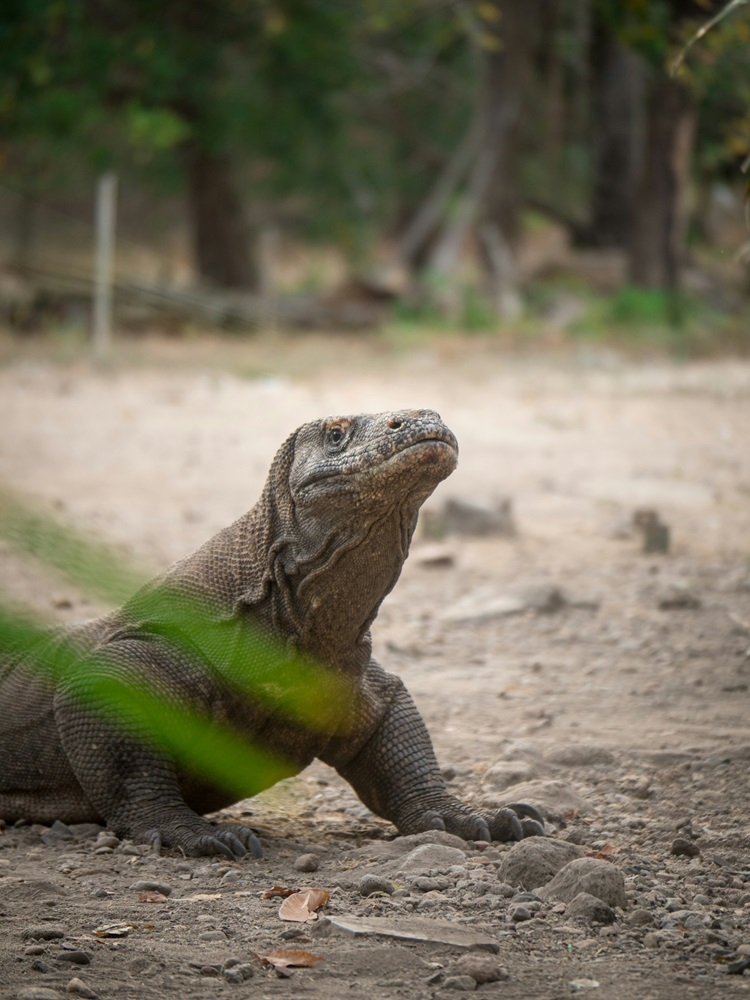
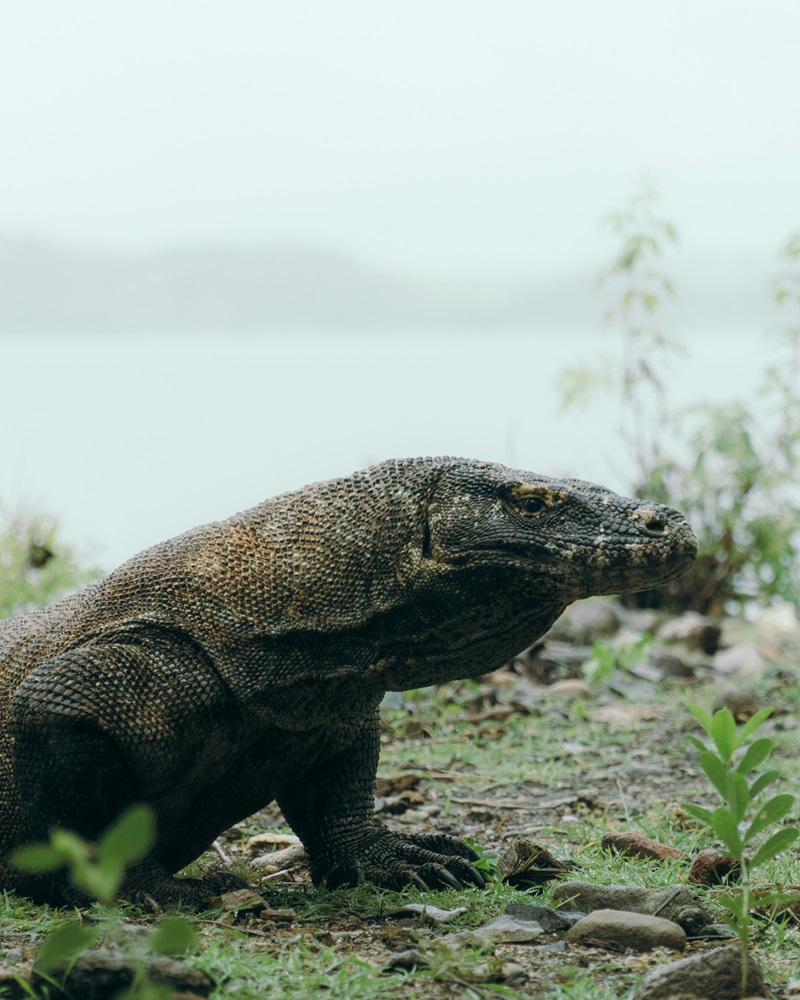
The Komodo dragon vigilantly surveys its domain, its keen eyesight scanning territories extending up to 300 metres. While juvenile Komodos feast upon insects, birds, and their eggs, their larger counterparts prefer real prey, feasting on the native snakes, deer, goats, and even water buffaloes. Visitors can explore Komodo Island, accompanied by a park ranger, and watch as these modern-day dinosaurs roam freely in their native habitat.
For those seeking deeper insights into the Komodo dragon and its habitat, a visit to the Niang Komodo Museum on Rinca Island promises an enriching experience. This museum showcases the diverse flora and fauna that flourish within Komodo National Park. Delve into the depths of biodiversity with information gleaned from the park’s dedicated rangers. The museum’s interiors boast two Komodo dragon skeletons, alongside nautical charts, land maps, and vivid dioramas illustrating land, sea, and community ecosystems.
Flores boasts more than just its iconic dragons. One of the islets lingering close to Komodo’s shores is Kalong Island, named after the flying foxes (kalong) that nest solely on this otherwise obscure destination, snoozing on mangrove branches deep within the island Rarely do visitors shore up here, instead, they await the evening show. At dusk, against a backdrop of softly-tinted sunset, these giant bats take flight all at once, swarming into the sky as it darkens towards night. An impressive cauldron of bats flies above head like a cloud as they embark on their nightly nocturnal feed around the isles. Quite the spectacle to witness from the seas below.
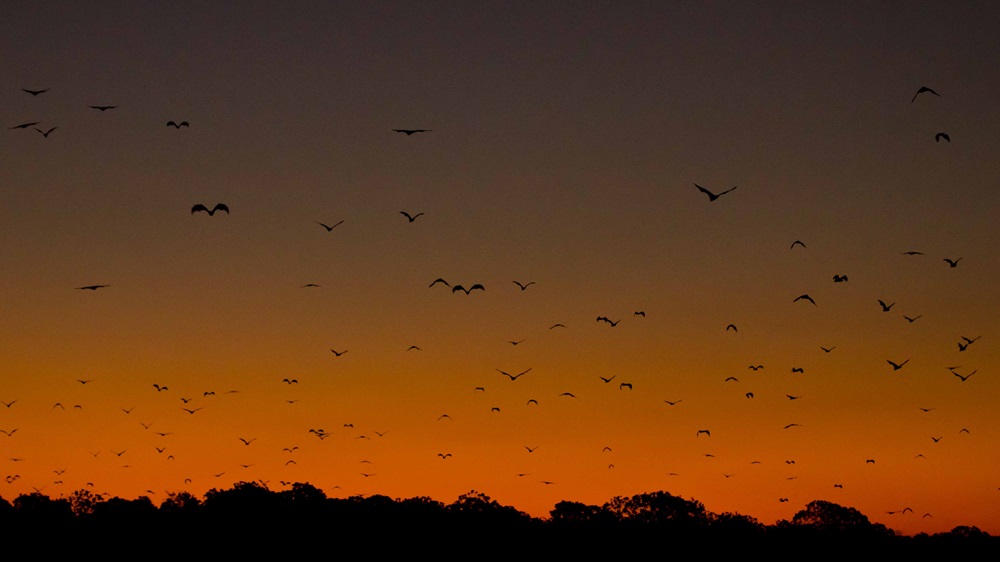
Stunning Seascapes
The allure of Komodo transcends its terrestrial realm, extending to its azure waters. For divers, Flores is a treasure, but the seas are just as wondrous for those snorkelling, offering a rich seascape of corals and exotic tropical fish to witness. Perhaps the most popular of all is Manta Point, offering an encounter with the graceful marine giants known as manta rays.
These gentle behemoths navigate the ocean depths, their colossal wings propelling them with elegance as they scour for plankton and small fish. Snorkelling or diving alongside these majestic creatures promises an unforgettable experience, provided one respects their space and behaviour, mirroring the reverence accorded to their land-dwelling counterparts, the Komodo dragons.
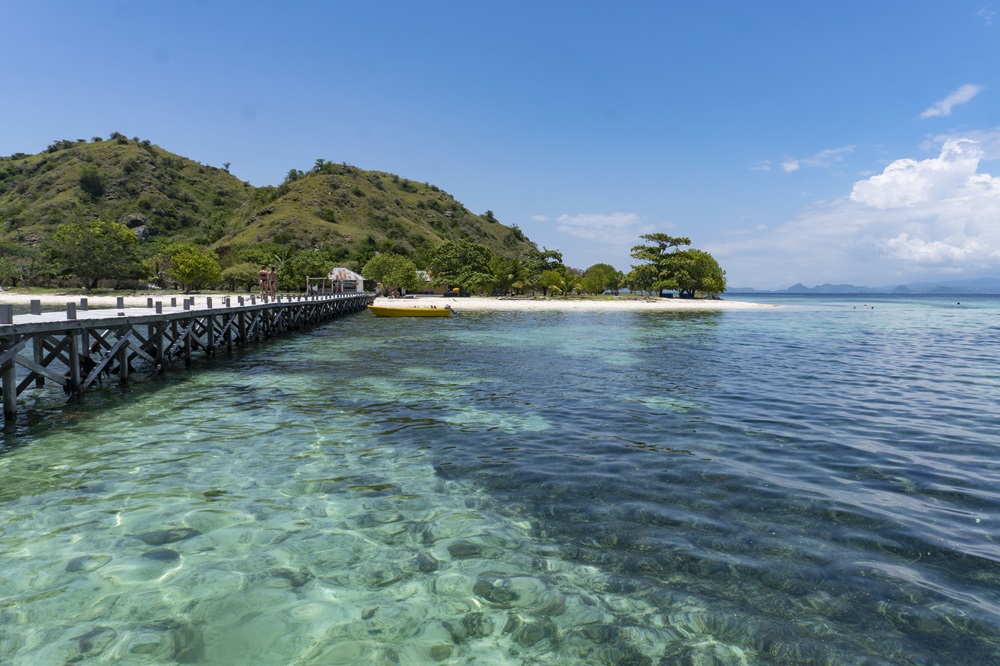
For island adventures in East Indonesia, the Cape of Flowers certainly lives up to its name. This stunning region and its scattering of wildlife-rich islands entice visitors to witness the truly exotic, with its gorgeous blue waters offering views from above and below. Best enjoyed over a few days, cruise upon a liveaboard, or settle into one of the handful of luxury resorts lucky enough to call Flores home.






